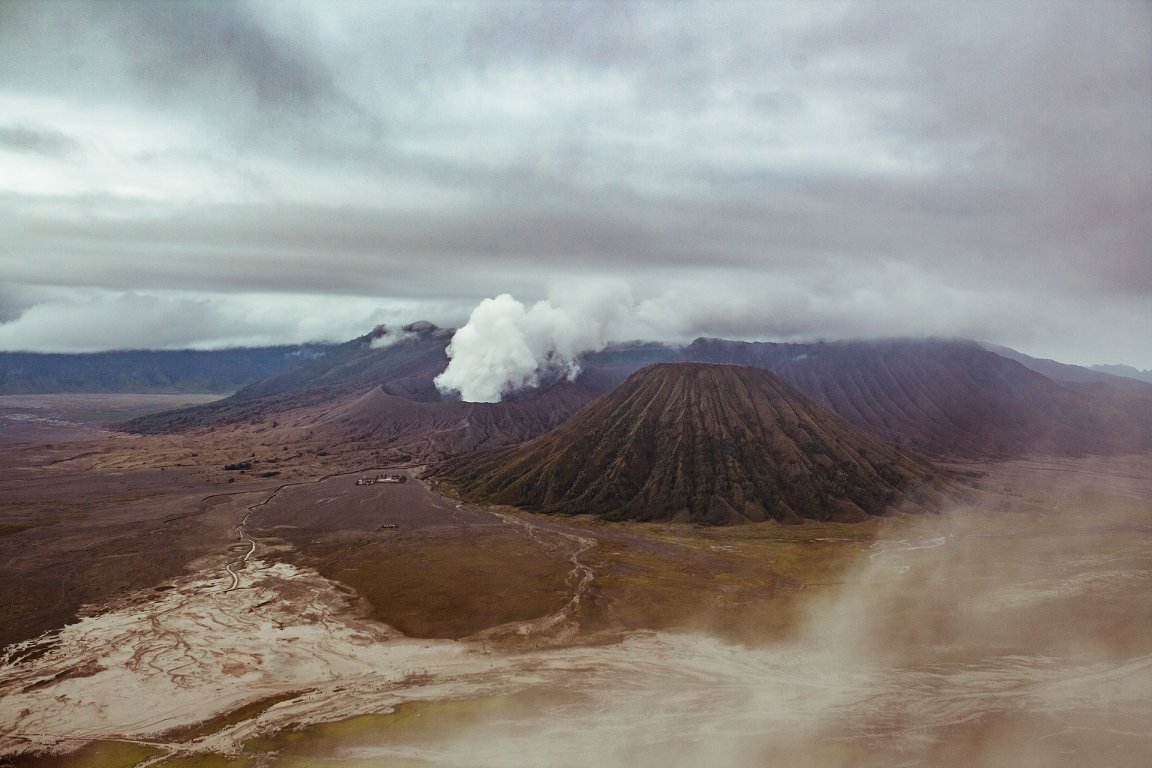
The ‘Unknown Eruption’
In 1465, a volcano erupted that caused lunatic environmental changes across Europe for the next decade. It turned the sky an eerie dark, dusk-colored blue for the the marriage of King Alfonso II of Naples. It triggered rain so heavy that corpses floated to the surface in German cemeteries and citizens in Thorn, Poland, traveled the streets by boat. Four years later, it would go on to instigate a mini ice age in Europe, during which fish froze in ponds, grass didn’t grow, and citizens in Bologna traveled their city’s frozen waterways on horses.

Perhaps the strangest aspect of the story, though, is that scientists are clueless as to where the volcano is to this very day — beyond that it erupted in the tropics. Because of this, it has become known as the ‘Unknown Eruption’.
Archaeologists visiting Tongoa, in Vanuatu, contributed the first clues to this mystery, when they heard tales of a massive volcanic eruption that split an island and scattered its inhabitants. All that was left of the ancient volcano was a crater roughly one kilometer (or half a mile) hidden beneath the ocean. It was known as Kuwae. Stories placed Kuwae’s eruption between 1540 and 1654 AD – and spikes of acidity in polar ice cores suggested a volcanic eruption somewhere in the 15th century. Could they be related?
The event only grew more enigmatic as study of it continued. Kevin Pang was the first to think he had found some certainty in 1993 when he dated the volcano’s eruption as 22 May 1453, based on a correlation of historical reports and geological findings derived from studying the rings in British oak trees. His estimate was within the grounds of viability, but meant that it was too early to give the king of Naples a dusky wedding day.
This date was also challenged by geological finds at the site itself. French scientists visited Kuwae, and, based on its size, estimated that the explosion released enough molten rock to fill the Empire State 37 million times over, and occurred between 1420 and 1430.
That estimate stood until another team led by Karoly Nemeth, an environmental scientist from Massey University, New Zealand, undertook a study on the islands surrounding the crater and found that there was no indication of a eruption big enough to alter the world’s weather so dramatically. He told the BBC, “there’s no doubt that there are volcanic deposits, but their extent isn’t what you’d expect from a truly massive eruption.” Nemeth instead proposed a single volcano had erupted multiple times in a relatively short period.
Nowadays, our best conjecture is based off findings from the Law Dome, where a geological record of world events is frozen in thick layers of Antarctic snow. Researchers who sampled Law Dome in 2012 found that there had probably been two explosions – but that they were both much later than the eruption at Kuwae. This goes some way towards satisfying both the disparate dates proposed for the eruption, and the smaller than expected size of the volcanic eruptions. But it also revealed that the discoveries at Kuwae by the French team had been mistakenly linked to the same event when they were in fact unrelated.
While some of the players have been identified, the eruption which caused the individual events of 1465 remain out of reach. Researchers still think the culprit was likely a volcano in the tropics, but one so big that its eruption probably sunk it into the sea, where it remains – still a mystery.
What We’ve Learned
Perhaps the most pertinent piece of knowledge we can extract from our studies of the geological events of the 15th century is how much we don’t know — or more precisely, how much we still have to learn. After numerous conclusions were reached with apparent certainty, further studies only revealed that they were conclusions based on coincidence, not causality: exercises in confirmation bias rather than definitive assertions.

However, while we may not have learnt the precise nature of the volcanic events of the 1500s, every study conducted has contributed to our understanding of volcanic eruptions in general – and of how we can react to them.
Knowledge of volcanoes and how they erupt has allowed us to make preparations for the next explosion, and plan how to deal with the severe environmental and geological consequences. While no technology has been adopted into widespread use, there are several ideas that are theoretically promising. These include geothermal drilling to relieve some of the gaseous pressure inside the magma chamber and bombing volcanoes to induce controlled eruptions.
The latter of these two technologies has potential benefits outside of reducing the human cost of a volcanic explosion: it has been proposed as a method of reducing global warming. While the Unknown Eruption caused an ice age that lead to famine and suffering across the world, a reduced and controlled version — in which scientists could use the sulfur particles from an eruption to reflect the sun’s heat away from earth — has been proposed.
The idea is called ‘geoengineering’, and it takes its impetus from events like the natural eruption of Pinatubo in the Philippines in 1991. This eruption cooled the earth by half a degree in two years — which represents a temperature decrease equivalent to 25 percent of the ambition of the Paris Agreement. Recently, a $20 million project run by Harvard University was announced that plans to disperse water and calcium carbonate particles into the stratosphere by 2022.
Using volcanic principles to cool the environment, despite their notorious history of death and destruction, shows the ingenuity and boldness of modern science. While it remains to be seen if geoengineering will prove to effective at helping us save the planet, it represents a promising broad-mindedness towards any method, no matter how science fiction-esque, to save our world.